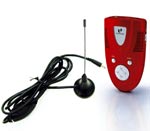Preguntas interesantes si te ofrecen stock options
Specific questions to ask:
1. What's the vesting schedule? Others have touched on this. It is the single most important factor to consider. Half now and 1/120th per month for 60 months is a lot different than a bulk grant that vests in 2014.
2. Can you vote and/or receive dividends on unvested shares? Control matters, and dividends matter even more. In many states, you can be fires without cause at any time. That includes one day before your shares vest.
3. What kind of shares are they? I would not accept common shares in this situation; I would insist on preferred shares. Preferred shareholders are paid dividends first and if the company is liquidated they receive the proceeds first (though a consulting company isn't likely to have much in the way of assets).
4. What is the company's existing and potential future capital structure? If the company has a great deal of debt, you aren't likely to receive much money. If your approval is not required to issue more shares, especially more preferred shares (possibly senior to your own) then you may find your stake nearly worthless when future employees or investors are issued new shares.
5. What does the company's balance sheet look like? Most small companies have little or no assets. This means they should also have no debt. But in either case, be aware that you are buying shares that have little or no liquidation value. If the company's operating performance suffers, it is likely to go bankrupt and your shares will be worthless.
6. What do the recent income and expense reports look like? What do the current bookings look like? You need to know exactly who the customers are, how diverse they are, and what their future commitments are.
7. Do you trust management? Are they owners? Do they have control?
8. Will you get a seat on the board? If so, who else is on the board? Do you trust them? Are any of them independent?
9. Last, and deliberately least because we are considering an investment here, do you like the work? Your coworkers? Is this an environment in which you want to spend your time? This helps you figure out what you're giving up by staying; you might also earn a higher salary elsewhere or enjoy other perks that you must value against the compensation you would receive by staying.
Quite frankly, as a dotcom bust veteran, I don't value equity very highly. This is especially true of companies with little in the way of tangible assets and even more true if it's common equity. This situation would have to be almost perfect for me to even consider it; i.e., the answers to almost all of the above questions would need to be favourable.
Let's ask one more question, of ourselves, that might help lay the issue to rest:
10. Why wasn't I inquiring about buying shares in this company before the offer was made?



